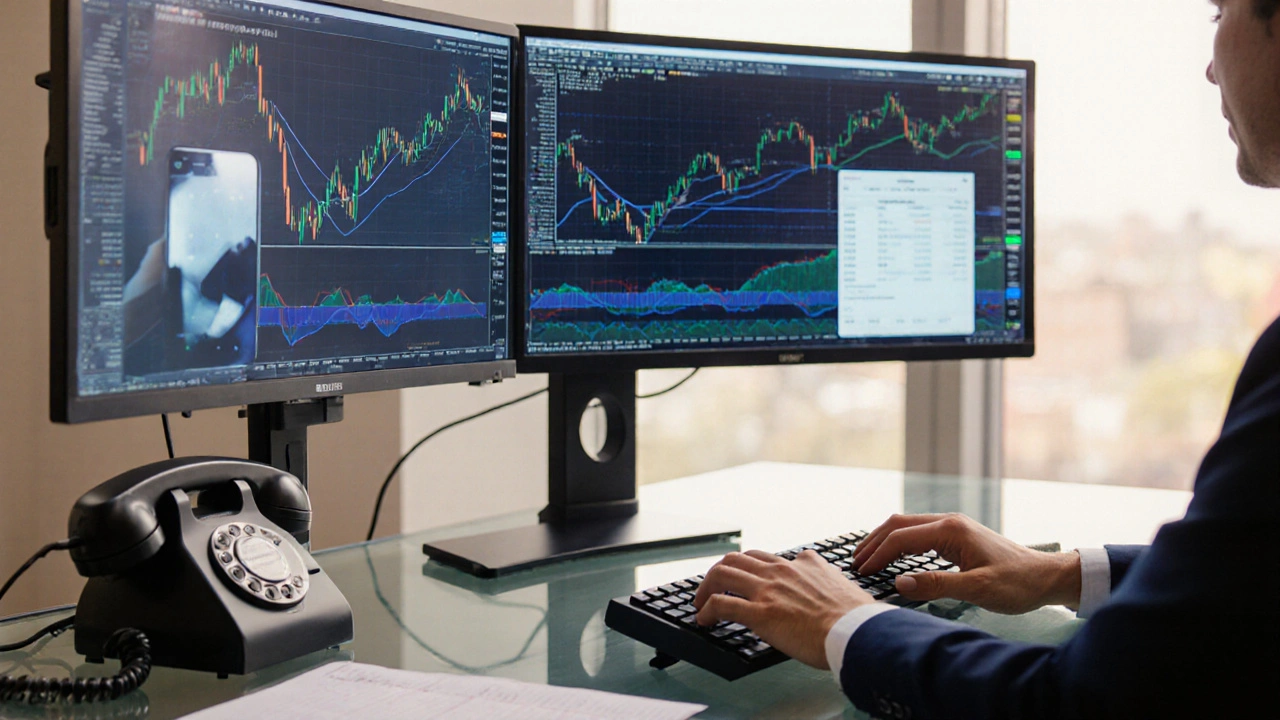AI Trading Tools: How They Boost Your Investing Game
Ever wondered why some traders seem to spot trends before anyone else? Most of them aren’t psychic – they’re using AI trading tools. These apps and platforms crunch huge amounts of data in seconds, turning raw numbers into actionable signals. If you’re ready to trade smarter, this guide shows you what AI tools can do and how to start using them right away.
What Exactly Is an AI Trading Tool?
In plain terms, an AI trading tool is software that applies machine‑learning models to market data. It looks at price history, news feeds, social sentiment, and even macro‑economic reports. Then it predicts short‑term moves or suggests trade entries. Think of it as a digital assistant that watches the market 24/7, flagging opportunities you might miss.
Key Benefits You’ll See Fast
Speed. Human traders need minutes to read a chart; AI does it in milliseconds. That edge matters when price swings happen in seconds.
Consistency. Emotions can wreck a trading plan. AI follows coded rules without fear or greed, keeping your strategy disciplined.
Depth. AI can analyze thousands of variables at once – something no person can do manually. This broader view often uncovers hidden patterns.
All that sounds great, but you still need to pick the right tool for your needs. Here’s a quick checklist.
How to Choose the Right AI Tool for You
1. Skill level. Beginners should start with platforms that offer pre‑built strategies and clear tutorials. Advanced traders might prefer open‑source libraries like TensorFlow where they can code custom models.
2. Data sources. A good tool pulls real‑time price feeds, news APIs, and sentiment scores. If the data is stale, the predictions will be off.
3. Cost. Some AI tools charge a monthly subscription, while others take a small cut of each trade. Calculate how the fees fit your budget and expected returns.
4. Transparency. Look for tools that explain why they made a recommendation. Black‑box systems can be risky if you can’t verify the logic.
5. Risk controls. The best platforms let you set stop‑loss limits and position sizes automatically, protecting you from big losses.
Getting Started in Three Simple Steps
Step 1: Sign Up. Choose a reputable AI platform – many offer a free trial. Create an account and link your brokerage if you plan to trade live.
Step 2: Test the Waters. Run the AI on historical data (backtesting) to see how its suggestions would have performed. Adjust parameters like risk tolerance or time frame until the results feel comfortable.
Step 3: Trade Small. Start with a modest amount of capital. Follow the AI’s signals, but keep an eye on the market and be ready to intervene if something looks wrong.
Common Pitfalls to Avoid
Don’t assume AI guarantees profits. Markets can be chaotic, and models can miss unexpected events like a surprise earnings miss. Also, avoid over‑optimizing a model on past data – it may fail in real‑time conditions.
Another trap is relying solely on one tool. Combining AI insights with your own research creates a more robust strategy.
What’s Next for AI in Trading?
The next wave includes generative AI that can write custom trading scripts on the fly, and deep‑learning models that understand nuanced language in news headlines. As cloud computing gets cheaper, even retail traders will get access to enterprise‑grade AI power.
Bottom line: AI trading tools can level the playing field, giving you speed, consistency, and deeper analysis. Pick a platform that matches your skill level, test it thoroughly, and start small. With the right mindset and a bit of discipline, you’ll see how AI can turn a good trading plan into a great one.
How Technology Boosts Modern Stock Trading
- Lorcan Sterling
- 0 Comments
Explore how algorithmic trading, AI, mobile apps, blockchain, and cloud computing transform stock trading, boost speed, lower costs, and give traders a competitive edge.
Read more

